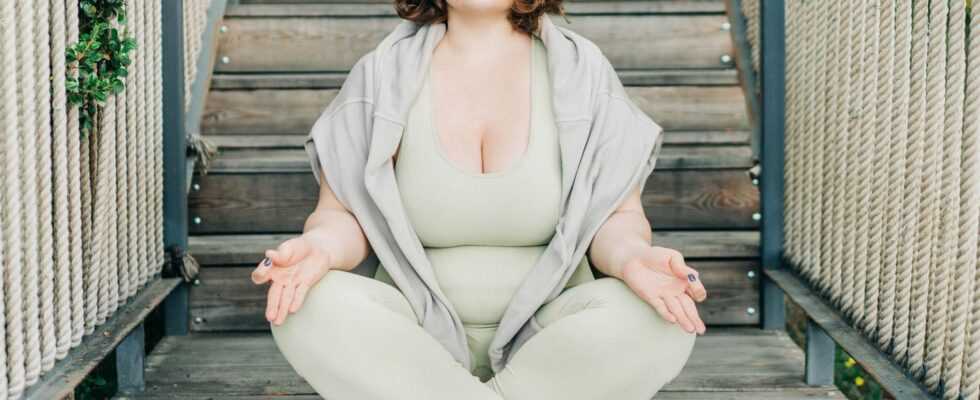First aid for panic
3 simple breathing exercises for anxiety
© Mariia Korneeva / Shutterstock
In uncertain times like these, fear quickly overwhelms us. With these breathing exercises you can find your inner peace (again) when everything is getting too much.
Pandemic, war – one horror story is currently chasing the next in the news. So it’s no wonder that more and more people are having problems with fear and panic. If you suffer from severe panic attacks and anxiety, you should of course speak to a doctor. But if a feeling of fear overwhelms us in everyday life and doesn’t want to let go, breathing exercises can be a valuable tool to find peace and relaxation again.
Because when we are constantly under stress – and fear and panic are definitely stressors for our body – we also constantly release hormones such as cortisol, adrenaline and noradrenaline. They are supposed to give us an energy boost in acute stressful situations so that we can concentrate better for a short time and thus solve the specific problem. But if we don’t relax at all, because our body stays in this panic mode all the time, it can make us ill in the long term.
In such moments of fear, we should consciously activate the parasympathetic nervous system – that is the part of our vegetative nervous system that is responsible for relaxation. Breathing exercises, such as from yoga, are a very good tool when everything is too much and the fear is too great.
These 3 breathing exercises help against acute fear and panic
1. Deep abdominal breathing
When we’re stressed, we often breathe shallowly and only into our chests. Deep abdominal breathing, on the other hand, signals to our body: everything is fine, you are safe. So when we get a sense of panic and want to consciously calm down, this breathing technique can help.
That’s how it’s done:
- It is best to put your hand on your stomach to feel how deeply you can breathe.
- Then inhale deeply through your nose into your stomach and feel the abdominal wall rise with your hand.
- Then breathe out slowly through your mouth until your lungs are completely empty.
- If you’re not pregnant and it’s easy for you, you can pause your breath for about three to five seconds between inhalation and exhalation and before you inhale again. In yoga, this is called khumbaka, and it provides an additional relaxation effect.
2. Alternate breathing
Alternating yogic breathing, also known as Anuloma Viloma or Nadi Shodana, also helps with nervousness, stress and sleep disorders. In this breathing exercise, the focus is on the long exhalation, which activates the parasympathetic nervous system and has a relaxing effect.
That’s how it’s done:
- Fold the index and middle fingers of your right hand in and extend your thumb, ring finger and little finger. Then bring your hand to your nose and place your thumb over your right nostril and your ring and pinky fingers over your left so that you can plug both nostrils with your fingers.
- First, leave both nostrils open and breathe deeply in and out. Gently close your right nostril with your thumb.
- Then inhale through the free left nostril for four seconds.
- Then close your left nostril and hold your breath for six seconds (Khumbaka, again: be careful if you are pregnant. It is best to talk to your:your doctor:doctor or skip the breathing pause).
- Then, open your right nostril again and exhale through it for eight seconds.
- Hold for about six seconds, and then inhale through the right nostril for about four seconds.
- Then, hold your breath again for six seconds before exhaling through your left nostril for eight seconds.
- Keep doing this for a few minutes until you feel noticeably calmer and more relaxed.
3. Ujjayi breathing
The Ujjayi breath is also a technique from yoga and translated from Sanskrit means something like “victorious breath”. And in this case that means defeating the hyperactive mind and the thought spirals – which are usually the trigger for fear. You can practice Ujjayi breathing, for example, while you are meditating – or in any specific situation when you feel fear or panic rising in you.
That’s how it’s done:
- Inhale deeply and then exhale with your mouth open and your glottis narrowed, as if you were breathing on a mirror.
- Then breathe in again with your glottis narrowed – you should be able to hear the rushing sound of the breath in your throat. Breathe the air deeply into your entire lungs before exhaling.
- Practice this breathing for several minutes until you feel calmer.
Sources used: yogaeasy.de, yogaworld.de

